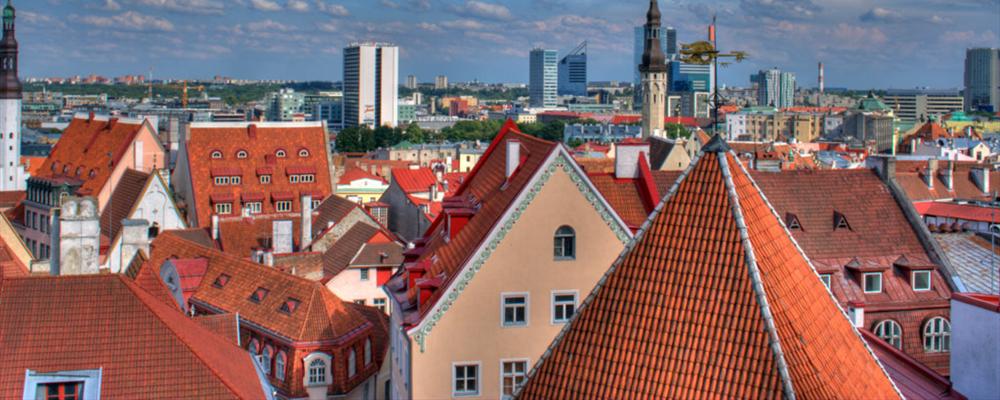
Estonia
( 1 user review )Estonia is a Baltic state in Northern Europe. It has land borders with Latvia and Russia. With a coastline on the Baltic Sea and Gulf of Finland, Estonia also has sea borders with Finland and Sweden.
Other destinations
Estonians have a special love for nature, and many will tell you that they would rather sit under a tree in an empty forest or hike in a national park than almost anything else.
National Parks
Overseen by the country's Ministry of the Environment or "Keskkonnaministeerium", the five renowned national parks are:
-
Karula National Park, the smallest national park, located in South Estonia
-
Lahemaa National Park, 50km east of Tallinn, with 1000 sq km of bays, peninsulas and forests.
-
Matsalu National Park, one of the largest and most important autumn stopping grounds for migratory birds in Europe
-
Soomaa National Park (Soomaa translates to "Land of Bogs"). Peat bog formed from glacier melt around 11,000 years ago.
-
Vilsandi National Park, covers 238 sq km, including 163 sq km of sea and 75 sq km of land, plus 160 islands and islets.
Baltic Islands
Tranquil, laidback and unspoiled, Estonia's 1,500 Baltic islands provide a splendid getaway to nature. Located off the west coast of Estonia, the two largest islands are:
-
Saaremaa, including the town of Kuressaare and one of few well-preserved medieval castles in the Baltics
-
Hiiumaa, including the town of Kärdla
Travelers can visit the national parks and islands on their own or as part of an eco-tourism adventure tour, like those led by TrekBaltics .
Jägala Falls
The Jägala Falls (Jägala juga) is Estonia's largest waterfall. It is better to go early in the morning to catch the nice dawn lights or in the evening when the sun shines on the fall. During cold winters, Jägala Falls gets iced up and is an interesting place to go. It is located near Tallinn, 15-30 min car drive.
Getting there
A growing number of foreign visitors have been traveling to Estonia in recent years. According to Statistics Estonia the nation's statistical agency, 1.3 million foreigners visited the country in 2000, and that number climbed 38 percent to 1.8 million foreigners by 2005.
By plane
Tallinn is Estonia's international gateway. In addition to direct daily flights to/from all major Scandinavian (Helsinki, Stockholm, Copenhagen, Oslo) and Baltic cities (Riga, Vilnius) there are direct flights from all major European hubs like London, Paris, Frankfurt and Amsterdam and regional hubs like Prague and Warsaw. Eastward connections are from Moscow and Kiev. Local carrier Estonian Air provides half of the services and the rest is provided by Finnair, SAS, Lufthansa, LOT, CSA, Air Baltic and others. Easyjet is one of a few low-cost carriers that provide service between Tallinn and major European cities. Travelers can pay as little as EUR 120 (US$160) or £80 Sterling to fly roundtrip from London to Tallinn.
From London's Stansted Airport, Easyjet provides nonstop service to Tallinn. From Frankfurt, choose from Lufthansa and Estonian Air. From Brussels, select from KLM, Estonian Air, Finnair, SAS, Lufthansa and Czech Airlines. From Amsterdam, choose from KLM, Lufthansa, SAS, Czech Airlines, Finnair, LOT Polish, and Northwest. From Rome's Fiumicino Airport, select from Alitalia, Czech Airlines, Estonia Air, KLM and Finnair.
Close proximity and excellent ferry services with Helsinki allow for combination of open-jaw air travel.
Daily domestic flights are from Tallinn to the islands of Hiiumaa (Kärdla) and Saaremaa (Kuressaare).
-
Lennart Meri Tallinn Airport or Ülemiste Airport (IATA : TLL) (ICAO : EETN), about 5 km from the city center, is increasingly becoming an airport hub of the Baltics. Estonian Air provides good quality services to a series of European cities. Other major airlines include Finnair, SAS and EasyJet. Bus line 2 rans from the airport to downtown Tallinn, taxis are also available.
-
Tartu Airport or Ülenurme Airport (IATA : TAY, ICAO : EETU) is located 10km from Tartu downtown. International flights include Riga and Stockholm. The airport's bus stop is located in front of the terminal. Bus travels on the route Ülenurme - Tartu City Centre. The bus fare is 15EEK (about 1EUR) and tickets can be bought from the bus driver.
-
Kuressaare Airport (IATA : URE, ICAO : EEKE) is situated 3 km from the town of Kuressaare on Saaremaa island and offers regular flights to Stockholm and domestic flights.
By train
International train services are to/from Russia, Moscow. Domestic services connect Tallinn with Narva in the east and Viljandi in the south, Pärnu in the south-west, Tartu and Valga in the south-east.
By car
Good road connections are to the south (Via Baltica routing Tallinn-Riga-Vilnius-Warsaw) and east (Tallinn-Saint Petersburg). Domestic road network is dense and covers all regions of the country.
By bus
Lots of good and cheap connections from Moscow, Saint Petersburg, Kiev, Kaliningrad, Warsaw, and all larger Baltic and German cities. The most popular service provider is Eurolines , others include Ecolines , BalticShuttle and Hansabuss .
Eurolines can provide visa services to Russia, however it takes two weeks (one week rush).
By boat
Ferry lines connect Tallinn with Sweden (Stockholm), Finland (Helsinki, Mariehamn) and during summers also with Germany (Rostock). Tallinn-Helsinki is one of the busiest searoutes in Europe and has daily 20 ferry crossings and nearly 30 different fast-boat and hydrofoil crossings (the later do not operate during winter). For details see Port of Tallinn passenger schedules .
Minor international routes include recently re-established connection between Latvia port of Ventspils and the island of Saaremaa and Paldiski - Kapellskär (Sweden) with two different operators.
Traveling around
The road system is quite dense though the quality of roadcover is varying. The speed limit in countryside is 90 km/h and 50 km/h in the cities unless specified otherwise. The passengers are expected to wear seat belts. Lights must always be switched on.
In the central areas of bigger cities a fee is levied on parking cars, but finding a provider of tickets is sometimes difficult as mobile parking is wide-spread.
By train
Estonia's train network does not cover the whole territory. The quality of services has suffered considerably from privatization and the main means of local transport is now bus. Tallinn has three frequently-going local train lines (Tallinn-Keila-Paldiski/Riisipere and Tallinn-Aegviidu) see: .
By thumb
Hitchhiking in Estonia is generally good. The Baltic countries have a lively hitchhiking culture.
By bus
Estonia has a comprehensive line network all over the country. All bigger cities like Tartu, Pärnu, Viljandi and Narva are accessible by bus network. There is a journey planner at , in English, Finnish and Russian. But check also (only between bigger cities and to outside Estonia).
By bicycle
The international bicycle project BaltiCCycle may provide you with a lot of information and help.
By car
Estonia has lots of car rental companies and the level of English spoken by their representatives is generally very high. If you go to Level 0 of Tallinn international airport, there are several counters all touting cars.
Car rental in Estonia is very cheap compared to Western Europe. You can get a decent car shared between two people for approximately 150EEK/person/day e.g. a 2004 Fiat Punto.
An excellent day trip is to drive from Tallinn to Tartu. It takes about 2.5 hours each direction.
As of September 3, 2006 the drive from Tallinn to Tartu has been much improved. Outside of Tallinn it is a 2 lane paved road with some construction ongoing to upgrade it. It takes 2 to 2 1/2 hours. There are few sights of interest along the way. The terrain is flat and most of the road is bracketed by birch tree and a few pines. I can recommend Sam's grill about 1/2 way between Tallinn and Tartu as a place to stop. There is a gas station next door.
Driving in Estonia can be more dangerous than in much of the Europe and United States. Some drivers can be aggressive, recklessly overtaking vehicles and traveling at high speed, even in crowed urban areas. Estonian laws against driving under the influence of alcohol are strict and follow a policy of zero tolerance. Unfortunately, accidents involving intoxicated drivers are distressingly frequent. You should always remain alert to the possibility of drunk drivers and drunken pedestrians. Standards of driving can range from bad to down-right lethal. The best advice is to drive defensively: don’t assume your fellow drivers will do what you expect them to do, like stop for red lights or signal before they merge into your lane. If you can avoid it, it’s probably best not to drive on inter-city highways.
See
-
Tallinn's Medieval Old Town, Tallinn
-
The Rotermann Quarter, Tallinn, Shopping district
-
Kadrioru Park, Tallinn, Park
-
KUMU, Tallinn, Art museum
-
Tartu Jaani (St. John's) Church, Tartu
-
Pärnu Beach, Pärnu
-
Narva Hermann Castle, Narva, Museum
-
The Kaali meteorite craters, Saaremaa
-
Rakvere Ordu Castle, Rakvere, Museum
Medieval History & Manors
The main reason most people first come to Estonia is to see the best protected and intact medieval city in Europe - Tallinn. The unique value of Tallinn's Old Town lies first and foremost in the well-preserved completeness of its medieval milieu and structure, which has been lost in most of the capitals of northern Europe. Since 1997, the Old Town of Tallinn has been on UNESCO's World Heritage list.
Living under the rule of Scandinavian kings, Russian empire and Teutonic Knights has left Estonia with unique and rich blend of historic landmarks. Over one thousand manors were built across Estonia from the 13th century onwards. Some of the manors have perished or fallen into ruins but a lot have been reconstructed and now are favourite attractions with tourists. Nowadays there are about 200 manor houses under state protection as architectural monuments and 100 in active use.
Islands & Coastline
Estonia has over 1500 islands. The nature is essentially untouched and offers quite a different beach experience with their remoter rustic feel. Most of the public beaches are sandy and the average water temperature is 18°C. Inland waters and some shallow bays' water are even warmer.
The largest island is Saaremaa with an intact and well-restored medieval castle in its only city, Kuressaare. Stone fences, thatched roofs, working windmills and home made beer are all distinctive to Saaremaa. Hiiumaa on the other hand is well known for its lighthouses, unspoilt nature, Hill of crosses and the sense of humour of its inhabitants. Both islands have an airport so they can be quickly reached from Tallinn.
Other important islands include Kihnu, Ruhnu (with its "singing sand" beach), Muhu and Vormsi, each with its own unique characteristics. Most of the other tiny Estonian islands don't carry much cultural significance but can be appealing for bird watching, canoeing, sailing or fishing etc.
In July and August Pärnu, Estonia's summer capital, is the main attraction. The coastline itself has loads of untouched beaches and a tour from Narva-Jõesuu (in the East) towards Tallinn is great for exploring the coastline. Some of the well known places include Toila, Võsu, Käsmu and Kaberneeme.
Things to do
Tickets for events can be bought online via Piletilevi.ee or the lately established Ticketpro.ee .
There's quite a good list of various events in Estonia at Visitestonia.com .
Film Festivals
Music Festivals
-
Tallinn Music Week , Spring, Tallinn, Showcase festival, aiming to stage the best and most outstanding Estonian talent on two nights in Tallinn's most vibrant live venues, as well as a networking event for the music industry professionals.
-
Tallinn International Festival Jazzkaar , April, In addition to Tallinn jazz concerts will also take place in Tartu and Pärnu.
-
The Estonian Song Celebration (In Estonian: Laulupidu) , First held in 1869, takes place every five years. In 2009, 35,000 choral singers gathered to perform for an audience of 90,000 people. It is recognised by UNESCO as a Masterpiece of the Oral and Intangible Heritage of Humanity.
-
Õllesummer Festival , July, Tallinn, Approx 70,000 people attend the festival each year over the course of 4 days.
-
Viljandi Folk Music Festival , July, Viljandi, Annual folk music festival in a small but picturesque town of Viljandi. Each year the festival draws over 20,000 visitors.
-
Leigo Lake Music Festival , August, near Otepää, Open-air concerts are held in completely natural venues on the hilly landscapes of the Otepää highland. The musicians' stage is on an island in the lake, surrounded by thousands of listeners on the sloping shore.
-
Birgitta Festival , August, Tallinn, Music and theatre festival, held at the ruins of the historical Pirita (St. Bridget's) convent.
Self Guided Tours
Self guided tours are a good way to discover Estonia by yourself. For more information please visit the and sections on the official tourism website.
Eat
Estonian food draws heavily from German and Scandinavian cuisine. The closest thing to a national dish is verivorst, black pudding, served with mulgikapsad, which is basically sauerkraut stew.
Many types of food are close to Russian and have their equivalents almost exclusively in former USSR, such as hapukoor, smetana in Russian, a sour 20%-fat milk dressing for salads, especially "kartulisalat" or "potato salad".
As Estonia used to be a food mass-production powerhouse in the times of USSR, some of its foods, unknown to Westerners, are still well-recognized in the lands of the CIS.
Among other everyday food, some game products are offered in food stores in Estonia, mostly wild boar, elk sausages and deer grill. Some restaurants also offer bear meat.
For those with a sweet tooth, the national chocolate manufacturer is "Kalev", with many specialist stores around the country as well as supermarkets retailing the product.
The more adventurous may want to try "kohuke", a flavoured milk-curd sweet covered with chocolate and available at every supermarket.
Drink
Like their neighbors the Finns and the Russians, the Estonians know their alcohol. Favorite tipples include the local beer Saku or A. Le Coq , the local vodka Viru Valge (Vironian White) and the surprisingly smooth and tasty rum-like herbal liquor Vana Tallinn (Old Tallinn) , famous in the countries of former USSR.
A local soft drink is "Kali" (the Estonian equivalent of "kvass"), made from fermented brown bread. It can be described as an acquired taste.
Many locals also swear by "keefir", a fermented milk concoction.
Sleep
Number of hotels has exploded from few to tens and hundreds after Estonia restored independence. In 2004 Tallinn achieved first place among the Baltic Sea cities in the number of overnight stays in hotels, though still behind Stockholm and Helsinki in the number of total overnight stays. A list of bigger hotels as well as some restaurants and nightclubs could be found at Estonian Hotel and Restaurant Association .
As Soviet collective farms were disbanded many farmers switched to running "turismitalu" or tourism farms which are inexpensive and indispensable places for spending holidays in the nature, usually in former farm house. Site on Estonian Rural Tourism provides information on the tourism farms in Estonia. Another widespread option for budget-sensetive travellers is hostels, see website of the Estonian Youth Hostel Association .
The official tourism site Visitestonia.com has also got information and listings about B&B accommodation, youth hostels, camping and caravan sites etc.
Buy
The local currency is the Estonian kroon, EEK. One kroon is divided into 100 sent. Since 1993, the kroon has been fixed first to the German mark, and now to the Euro at a rate of 15.6466 to 1.
ATMs and currency exchange offices (valuutavahetus) are widely available. You will get the best rates by exchanging only after arrival in Estonia. Avoid changing money in the airport or port as the rates are quite bad over there.
Adoption of Euro in Estonia is annually being postponed due to the higher than allowed inflation rate. (As of 2007)
Costs
It is no secret that in most post-soviet countries consumer prices are considerably lower than in Western Europe, in part due to lower taxes. This has been one of the main driving forces behind the inflow of the Nordic guests to Estonia through the 1990s, but prices are rising steadily and surely. In heavily touristed districts (say, Tallinn's Old Town) prices are already equivalent to Scandinavia.
Talk
The official language is Estonian which is linguistically very closely related to Finnish. At the same time many in urban areas (especially younger people) speak English well. According to the Eurobarometer poll of 2005, 66% of Estonians can speak some Russian. This does not include native-language speakers. Thanks to heavy tourism and TV broadcasts from the other side of the gulf, Finnish is also spoken quite well by many people in Tallinn, the capital. German is taught at school in Estonia and a large number of people can speak some (22% according to Eurobarometer).
There is a large Slavic minority, particularly Russian and Ukrainians (some 25%).
Etiquette
The most common way of greeting is to shake hands. If there is a "long time - no see" situation, then a hug may be suitable.
Do not raise your voice in a conversation. A decent silent conversation is the Estonian way of doing business and is much appreciated.
Estonians are rational people and their interest tends to those who speak on subjects worthy of discussion, thus in conversations, less will be more.
Estonians are a hard working nation, sometimes referred as the Japanese of Europe. As is often true, spending more time with ones may prove otherwise.
Education is very highly valued in Estonia because as a small nation with no exceptional resources, they believe that the only way to be competitive is to absorb knowledge. There are so many highly educated people in Estonia that it is becoming a problem in the labour market - there aren't enough workers for jobs that requiring minimal education (trade jobs).
Be aware that camping on private lands is not allowed unless you ask for the permission (which you will most likely get). Forest lands and riparians on the other hand are open for everyone and anytime.
Estonians are tremendously proud of their nation and their country because as a small nation they have managed to gain independence and survived all the rough times that centuries of history filled with wars has served them.
Be careful when mentioning Estonia in the context of the former USSR. Any praising of Soviet practices is very unlikely to be understood or appreciated by the Estonians. The worst you can do is to call Estonians Russians or their language Russian!
Stay healthy
For an Estonian it is considered "mauvais ton" not to criticize Estonian healthcare system. Recent EU study showed however that Estonia occupies a healthy 4th place in the block by the basic public health service indicators, on the same level as Sweden. In fact, around 1998-2000 the Estonian healthcare system was remodeled from the obsolete USSR model, directed to coping with disastrous consequences of large-scale war to more up-to-date by the experts from Sweden. Estonia has harmonized its rules on travelers' health insurance with EU requirements. For fast aid or rescue dial 112.
Estonia has Europe's second highest rate of adult HIV/AIDS infections, currently over 1.3% or 1 in 77 adults. Generally the rate is much higher in Russian-speaking regions like Narva or Sillamäe. Don't make the situation worse by not protecting yourself and others.
Safety
Crime/violence: Low - Moderate
Petty crime in Tallinn and at Russian border
Authorities/corruption: Low
Transportation: Low
Health: Low
High rate of HIV/AIDS
Nature: Low
The published crime rate increased dramatically in 1991-1994 after democratic freedoms were introduced. In large part this is due to the fact that crime was a taboo subject before 1991, as Soviet propaganda needed to show how safe and otherwise good place it was. However it is still a significant problem in Estonia. The murder rate per 100,000 inhabitants, as of 2000, was some 4-5 times higher than in Sweden and Finland, although still significantly lower than in its biggest neighbour, Russia.
Today, the official sources claim achieving considerable reduction in crime statistics in the recent years. According to Overseas Security Advisory Council crime rate in 2007 was quite comparable to the other European states including Scandinavia. Criminal activities are distributed unevenly across the territory with almost no crime in the island areas and a considerable rate of drug dealing in predominantly Russian-speaking industrial area of North-East. In Tallinn petty crime is a problem and there are some incidents involving tourists, mainly pickpocketing (especially in the markets). Tallinn Old City and other main tourist attractions are closely watched by local police and private security companies.
The main advice to anyone worried about personal security is to stay reasonably sober despite tempting alcohol prices. When driving, make sure you have had absolutely no alcohol beforehand.
For police dial 110, for other emergencies like fires and so, call 112.
It has been mentioned that ordinary Estonians are unlikely to approach a complete stranger or a tourist on their own. If somebody suddenly turns to you in the street (with questions or matters of small business) keeping a cautious eye on your belongings would be wise.
Open homosexuality may be met with stares though violence is very rare.
Learn
Estonia has a fair amount of foreign students studying in its universities, especially from Nordic countries, as Estonian diplomas are recognized throughout the EU. See the articles for university town Tartu and capital Tallinn for details.
Work
No obstacles exist to citizens of EU countries to come to invest and work in Estonia. Citizens of developed non-EU countries are exempted from short-term tourist visas. Swedes and Finns have by far the largest working community of post-Soviet foreigners in Estonia. Estonia may have had rocketlike growth in recent years, but only from a very low base as a former Soviet republic, and average local monthly salary (4th quarter 2007) is around 800 EUR.
Education is very highly valued in Estonia because as a small nation with no exceptional resources, they believe that the only way to be competitive is to absorb knowledge. There are so many highly educated people in Estonia that it is a problem in the labour market - there aren't enough workers for jobs that requiring minimal education.
Considerable investments and some workers are constantly coming from CIS countries, though significant legal restrictions are imposed.
Citizenship and Migration Board is the authority responsible for dealing with the paperwork.
CV Online is one of the oldest Estonian recruitement and HR services operating in 9 countries (as of 2005).
-
Within Estonia, the postage cost for a letter up to 20 grams is 5.50 EEK (Estonian Kroon)(about €0,36)
-
To other Baltic and Nordic countries by air mail, the cost is 6 EEK, and to the rest of the world by air mail, the cost is 8 EEK.
-
Be sure to mark all air mail pieces with "Prioritaire/Par Avion" stickers available at the post office, or clearly print it on the mail if needed
-
Stamps are sold at post offices usually open during normal shopping hours, and also at newsstands
-
Post offices open on Saturday but for shorter hours than during the week and are closed on Sundays
Contact & location
1 Review
Add your review
The photos displayed on this page are the property of one of the following authors:
Maurice, Laura Marie, Jennifer Boyer, eek the cat, Alastair Rae, ToBreatheAsOne, Aapo Haapanen, netzanette, Priit Tammets
Some photos courtesy of:
 . The photos provided by Flickr are under the copyright of their owners.
. The photos provided by Flickr are under the copyright of their owners.
This travel guide also includes text from Wikitravel articles, all available at  View full credits
View full credits
Peter Fitzgerald, Raul, Andres Ello, Ronald Wikstrom, Tiia Monto, Rustin Johnson, d_nassau@hotmail.com, Jaakko , Sergey Kudryavtsev, Andreas Routsias, Upamanyu Mallik, S. Hall, mykolas1@aol.com, Ricardo, Aivar Ruukel, Stephen Atkins, David, Micaela Kelly, Tim Sandell, Ryan Holliday, Michele Ann Jenkins, Andrew Haggard, lindberg-johnson@comcast.net, Rolf Palmberg, Stuart Edwards, Evan Prodromou, Ian Kirk, Peter Donaghy and Yann Forget, Visitestonia, Texugo, Graham87, ChubbyWimbus, Inas, Blist, Ypsilon, Shotlandiya, Tatatabot, Superrod29, Vidimian, Salvadors, Jonboy, Episteme, InterLangBot, Huttite, TarmoK, Jemm, Bijee, Nickpest, EBB, Ronline and CIAWorldFactbook2002
This travel guide also includes text from Wikipedia articles, all available at  View full credits
View full credits

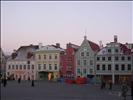
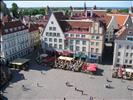


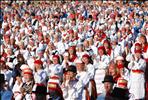
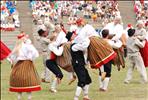
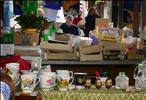

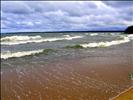
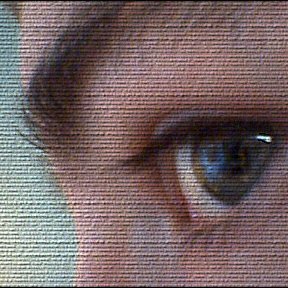

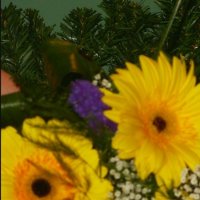




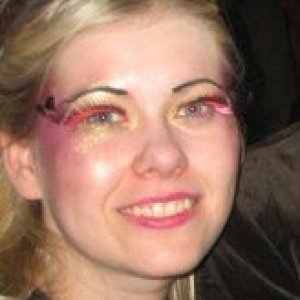

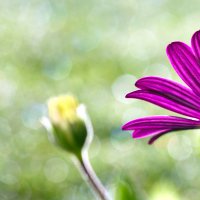
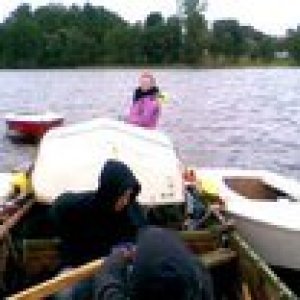

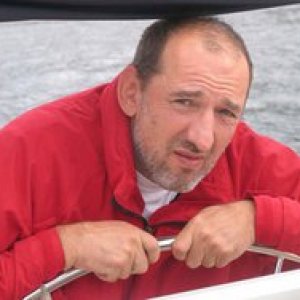











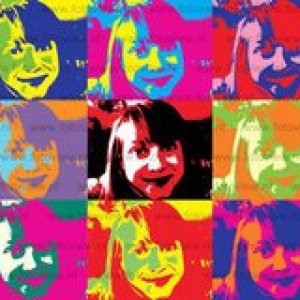

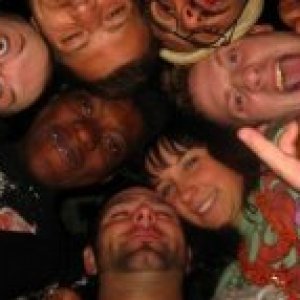








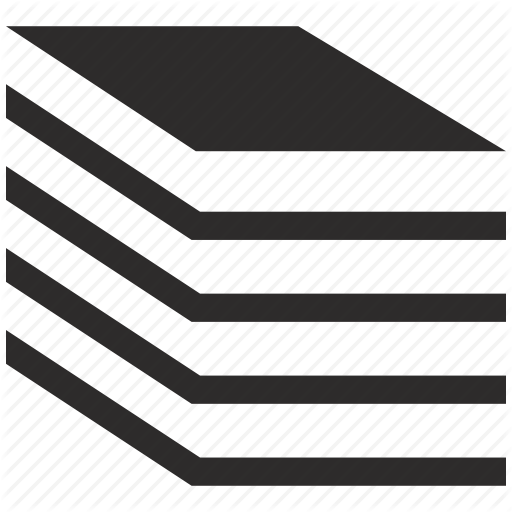

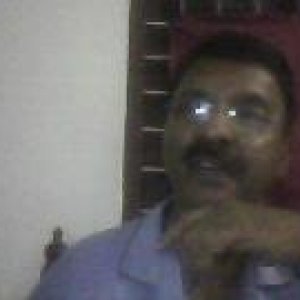



I liked
+Tallinn old town +historical sites +moderate pricesI disliked
-uncontrolled violent places -taxi & sales people trying to cheat you -hookers trying to force their 'favors' to the traveler